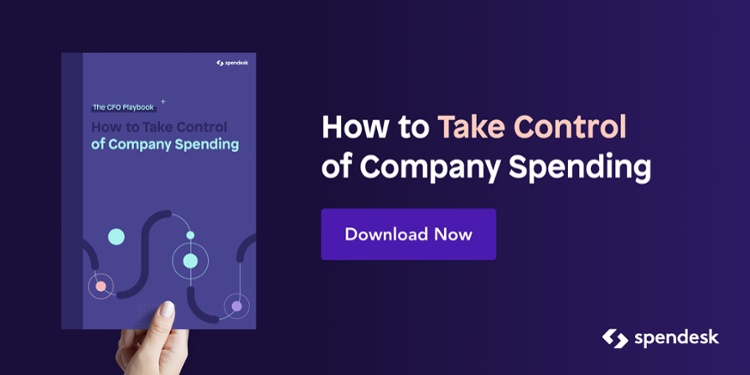)
Issuing an expense advance is a real challenge for companies. You need to be able to give employees a way to pay things, but offering money up front can feel risky.
For smaller expenses, businesses tend to rely on company credit cards or ask employees to pay out of their own pocket. But both of these options are limiting: team members can't be expected to pay thousands from their own money on company needs. Meanwhile, company cards are often limited to managers, and can be hard to keep track of.
Occasionally, expense advances are necessary. They let employees cover their expenses in the field without it affecting their own personal finances.
But this payment method is still not widely understood.
What are the best practices? What are your options? Which approach is right for you?
Allow us to shed some light on the subject.
What are prepaid expenses?
Also known as expense advances, prepaid expenses are when a company gives an employee money in advance to pay for a known cost. Instead of asking that employee to pay out of their own pocket, you give them the money before they need it.
Prepaid expenses = expenses paid in advance
This is an alternative to two other common practices: shared company credit cards and employee expense claims. These two practices aren't always an option for every business - you may not have enough credit cards to hand out, for example.
You may also want to avoid asking employees to pay out of pocket, even if they'll be reimbursed at a later date. In truth, it's unfair to expect team members to use their own money for company expenses - especially when the amounts become large enough.
[Read more about why employees hate expense reports.]
Expense advances are best used occasionally. If you find yourself relying on these to help employees cover costs, it's time to look for better spend management.
Payroll vs expense advances
We should also quickly acknowledge another relatively common form of advance: cash or payroll advances. These are not at all the same as expense advances.
A payroll advance is where the company offers an employee part of their pay in advance - essentially a short term loan. This may help the employee get through a tough financial patch, or pay a significant upfront cost (like the deposit on an apartment).
Expense advances are fundamentally different. Whereas payroll advances give employees their own earnings ahead of schedule, an expense advance gives them access to company funds to pay for a company expense.
Should you use employee advances?
As an employer, you are legally required to reimburse employee expenses incurred by your employees in the field. This includes travel, accommodation, meals, and other business-related costs.
Employees often settle these expenses with their own money. But when the amounts involved are high and recurring, advances may be the solution you need.
For example, lengthy overseas work trips can add up to a level of expense that your employees can't always cover out of their own pocket. A full week (or more) of meals and travel can be far too much for some team members.
You may also need to issue an advance when expenses are disproportionate to an employee's salary. Consider this scenario:
A salesperson on a monthly salary of £1,200 net, who incurs £300 worth of expenses each month, spends a quarter of their earnings on work costs.
This level of payment is obviously unfair on the employee, and an advance is probably best.
Recurring vs. one-time expense advances
A recurring advance means that a specific budget is established ahead of time and allotted to employees each month to cover their expenses. As much in the interest of cashflow as for the employee's budget. You'll need to come to an accurate estimate of the amount needed each month with the employee.
This advance is often decided upon when the employee first comes aboard, especially for roles involving frequent and/or long work trips. The employee completes a monthly expense report to claim a full reimbursement. In addition, the employee is required to reimburse the sum if they leave the company.
The other available solution is a one-time advance. In this case, the advance is transferred directly to the employee's personal bank account depending on how much it's estimated they'll need.
The employee presents their expense reports and proofs of payment to claim a reimbursement. If the expenses go above the estimated figure, the difference is reimbursed.
How can you limit the need for expense advances?
Since employee expenses can run high, it's essential to monitor expenses in order to keep a handle on cash flow. Even if you won't always be able to avoid advances, there are a few simple ways to keep these instances to a minimum
Solution n°1: Lend out the company credit card
We're not the biggest fans of classic company credit cards. From a practical perspective, they're not particular easy to manage. Who gets one? Do you even know where the company card is right now?
They're also a pretty significant fraud risk. And with a high credit limit, it can be risky lending them out to employees.
Plus, you need to be persistent in collecting all the proofs of purchase.
Despite all this, the company card remains a "classic" way that companies pay expenses. Most businesses use them, and they do serve their purpose for the most part.
Solution n°2: Create accounts with specific vendors
If you're constantly buying from the same suppliers (including hotels and air travel companies), it may be simpler to set up a company account. As Leah Davis explains for Abdo, Eick & Meyers:
"This can help to reduce employee reimbursements and simplify repeat expenses. Although employees still have to turn in receipts and documentation (i.e., substantiate their expenses), this eliminates the need to issue employee checks and/or receive excess advance repayments."
Solution n°3: Provide deferred credit cards
These cards debit the employee's account between 30 and 90 days after the payment is made. The main advantage for the employee is that they can be reimbursed (provided they submit their expense report on time) before the sum is withdrawn from their account.
However, this option represents a considerable cost for a startup or an SME as there is a minimum yearly charge of €100 on the card. And processing expense claims is also expensive in terms of the time it takes the employee and the accounting team.
The average expense report takes 50 minutes to process. Which doesn't seem overwhelming, until your one-person finance team has a pile of 30 to work through.
Solution n°4: Use prepaid expense cards
A prepaid expense card works on the same basis as a fuel card. The card is “loaded” with a specific sum and used like a normal debit card. The advantage for employees is that they no longer need to cover expenses using their own money, or fill in expense claims.
All they need to do is pay with their prepaid expense card, take a photo of the receipt on their mobile phone, and it's done and dusted.
Since this provides employers with real-time expense reporting, the advantage for them is that they can take the necessary precautions in just a few clicks if any suspicious activity should arise. The employer sets the limit on the card and can monitor payments in real-time which means no more nasty surprises.
A detailed expense log with all the corresponding receipts also means significant time saved when doing accounts.
With prepaid expense cards, employees no longer need to pay from their own pocket.
Move beyond employee advances
Though widely used, expense advances are not practical and require employers to monitor accounting activities and set up of an effective expense claim processing system.
If you need to save time and get better control over employee expenses, then opting for prepaid credit cards offers a traceable method of payment on which you can set a limit, while simultaneously simplifying your accounting process.
)


)
)
)
)
)
)